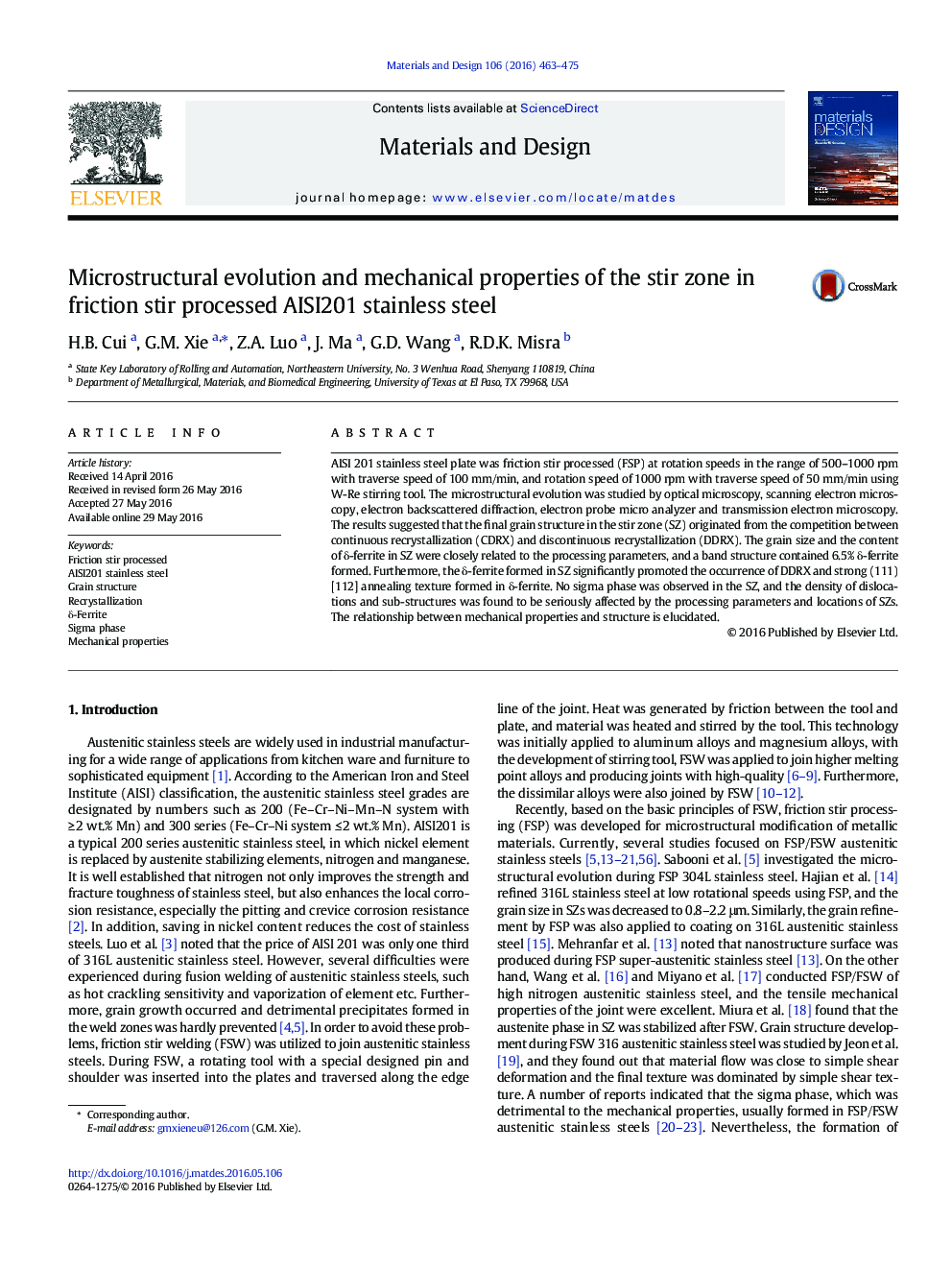| Article ID | Journal | Published Year | Pages | File Type |
|---|---|---|---|---|
| 827908 | Materials & Design | 2016 | 13 Pages |
•The grain structure resulted from the competition between CDRX and DDRX.•The grains on the AS were smaller and distributed inhomogeneously.•The δ-ferrite content in SZ varied at different FSP parameters and locations.•δ-Ferrite in SZs promoted DDRX and had (111) [112] annealing texture.
AISI 201 stainless steel plate was friction stir processed (FSP) at rotation speeds in the range of 500–1000 rpm with traverse speed of 100 mm/min, and rotation speed of 1000 rpm with traverse speed of 50 mm/min using W-Re stirring tool. The microstructural evolution was studied by optical microscopy, scanning electron microscopy, electron backscattered diffraction, electron probe micro analyzer and transmission electron microscopy. The results suggested that the final grain structure in the stir zone (SZ) originated from the competition between continuous recrystallization (CDRX) and discontinuous recrystallization (DDRX). The grain size and the content of δ-ferrite in SZ were closely related to the processing parameters, and a band structure contained 6.5% δ-ferrite formed. Furthermore, the δ-ferrite formed in SZ significantly promoted the occurrence of DDRX and strong (111) [112] annealing texture formed in δ-ferrite. No sigma phase was observed in the SZ, and the density of dislocations and sub-structures was found to be seriously affected by the processing parameters and locations of SZs. The relationship between mechanical properties and structure is elucidated.
Graphical abstractThe formation of the final grain structure in SZs originated from the competition between CDRX and DDRX, and δ-ferrite in SZ promoted the occurrence of DDRX.Figure optionsDownload full-size imageDownload as PowerPoint slide
